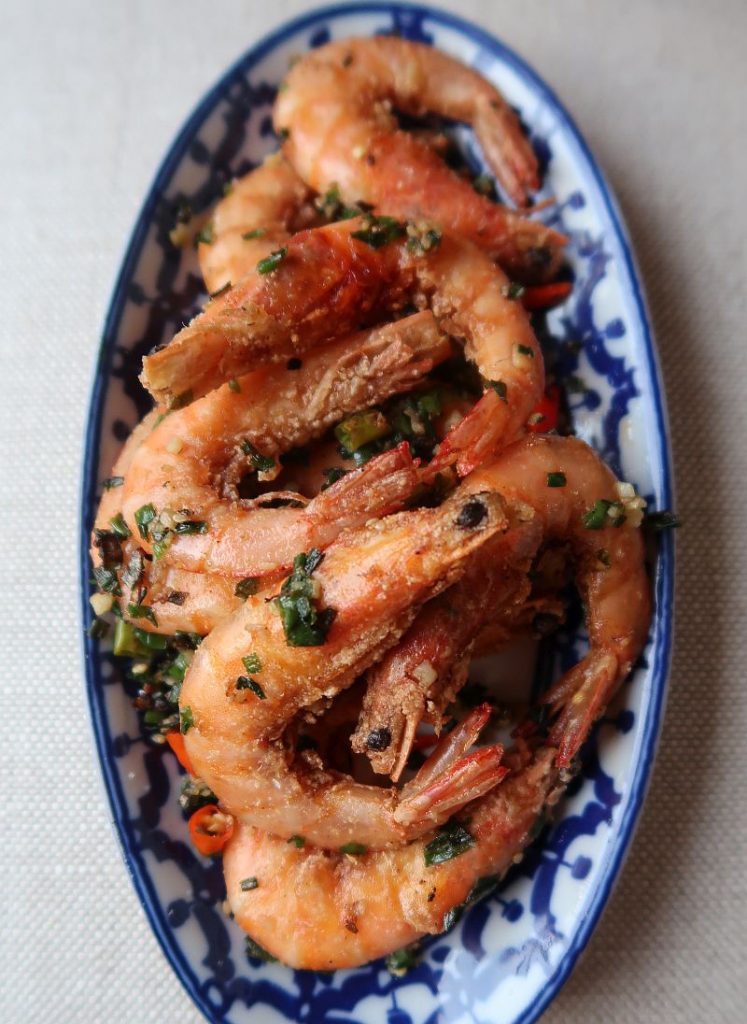
There are certain recipes that I return to over the years to tweak, and hopefully improve. Salt and pepper shrimp is one of those dishes. Not long ago, I air-fried the shrimp for a low-calorie version. The other day, wanting a midweek fried morsel, I deep-fried head-on, shell-on shrimp purchased from a Chinese market. They were roughly $5 per pound and I couldn’t resist. Plus, over the weekend, a friend asked me what it is that Viet cooks do to tom rang muoi to make the shrimp unusually crusty. Cornstarch was my answer and she seemed incredulous.
Anyway, I had a crusty version of salt and pepper shrimp on my mind as I wandered Lion Foods, my go-to Chinese-Vietnamese market in San Jose. Then I went home and experimented to see if I could achieve crustiness.
Buy the right shrimp and trim them
I bought jumbo shrimp for the air-fried version of salt and pepper shrimp, but for this more traditional rendition, you want to shop at an Asian or Latin market. The shrimp may be labeled as “white shrimp”, with thin shells and their heads attached. Their antennae, feet and pointy bits will remain too. At Asian markets, they’re often sold on ice for shoppers to pick their own. I select large ones that feel firm.
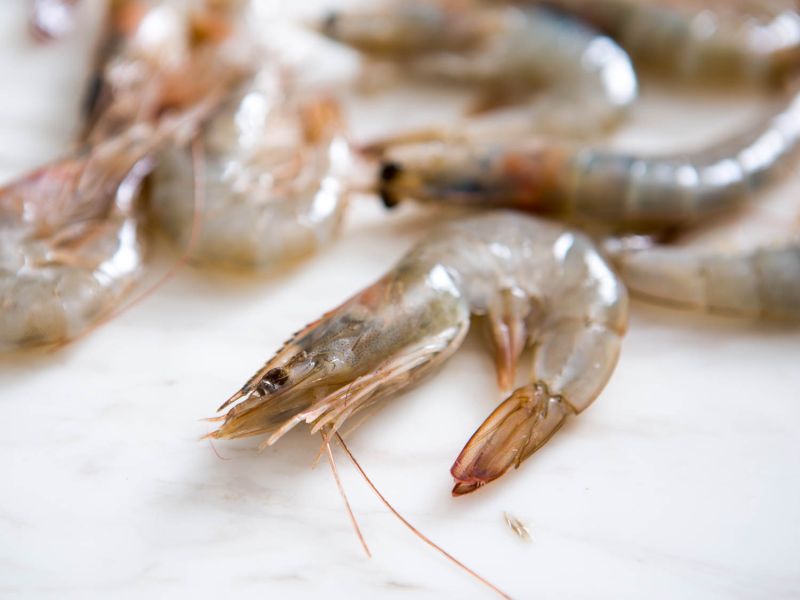
To prep the shrimp, use scissors to snip off any bits that may tickle or poke you as you eat all the shells. That includes the feet and pointy rostrum that make the shrimp look punk rocker-like. Then rinse and pat the shrimp dry with paper towel. (You can refrigerate the trimmed shrimp overnight, if you like.)
Enriched the cornstarch coating
I typically just coat the shrimp with dry seasonings and starch before frying but this time around, as the oil heated up, I had a change of mind. For air-fried shrimp, I tossed the coated shrimp in a little oil to mimic frying. The lesson from that technique was this: the oil helps to set the cornstarch. Otherwise, the starch may fall off once the shrimp hit the oil. The photo below is not pretty but you get the point!
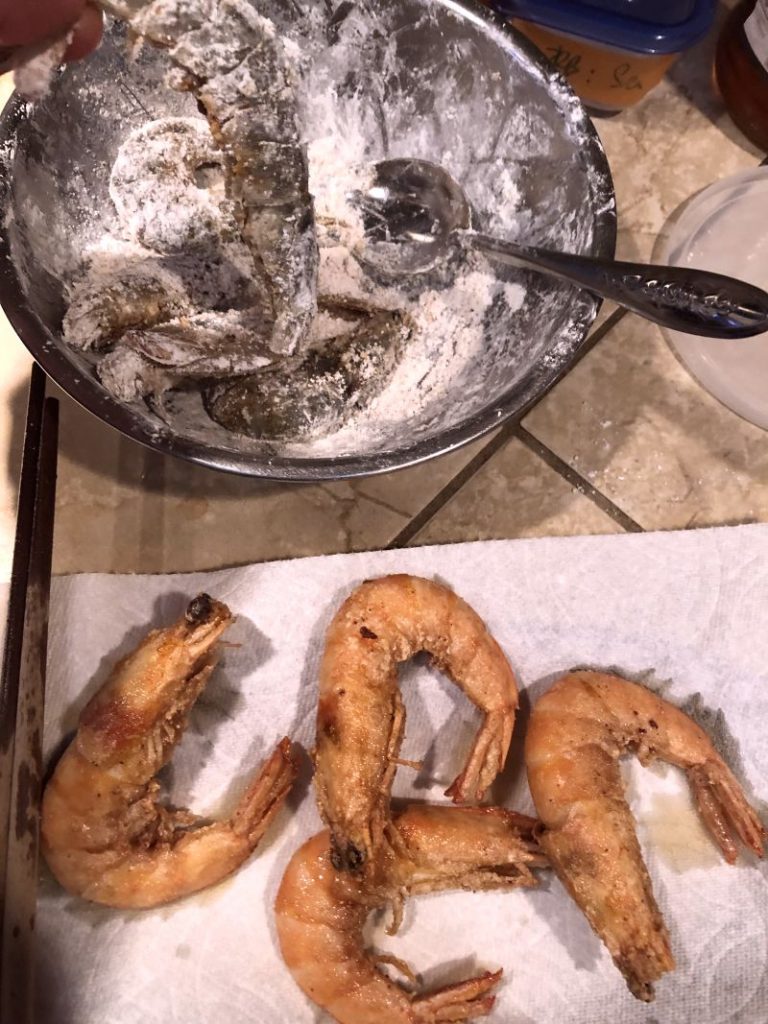
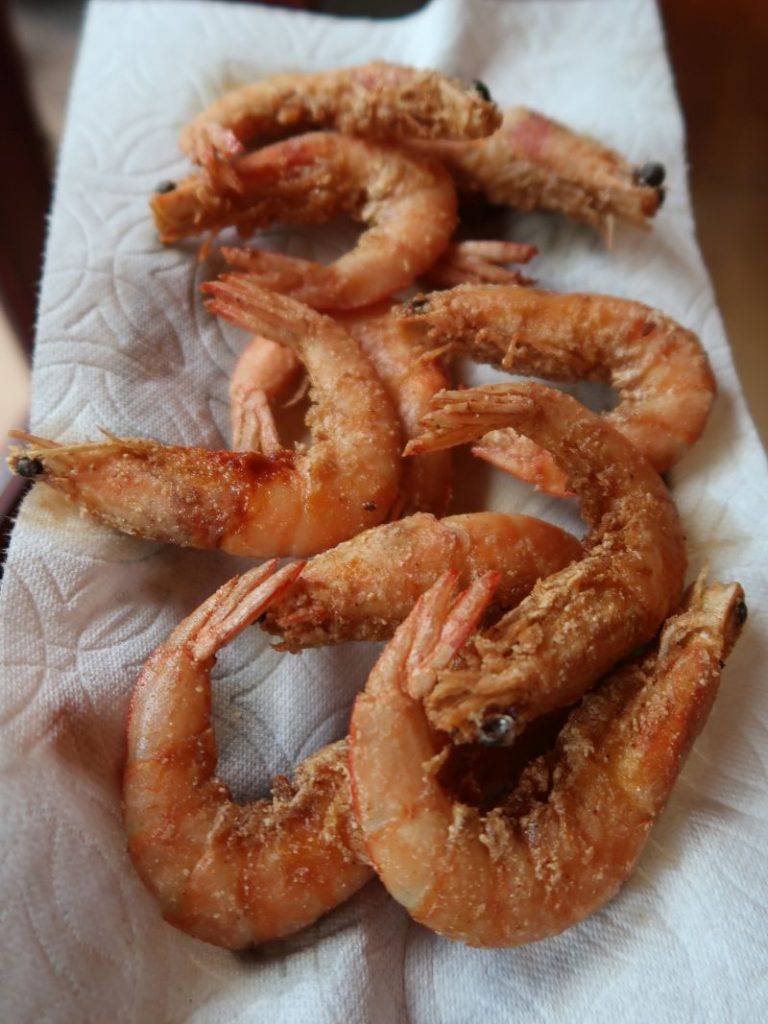
Given that, I drizzled a little oil over the coated shrimp and stirred them around to slightly moisten. Then I fried. The shrimp developed a delicate crispness that I’d not experienced before. They were not super crusty, but they had an extremely thin crust. Despite having their heads and eyes attached, the fried shrimp were elegant.
Keep things dryish
The other revelation I had was about the moisture in the aromatics that get stir-fried at the end. I typically do it quickly to bloom their fragrance but they’re often on the wet side – which means once they hit the shrimp, they diminish the crustiness that I’d worked so hard to create.
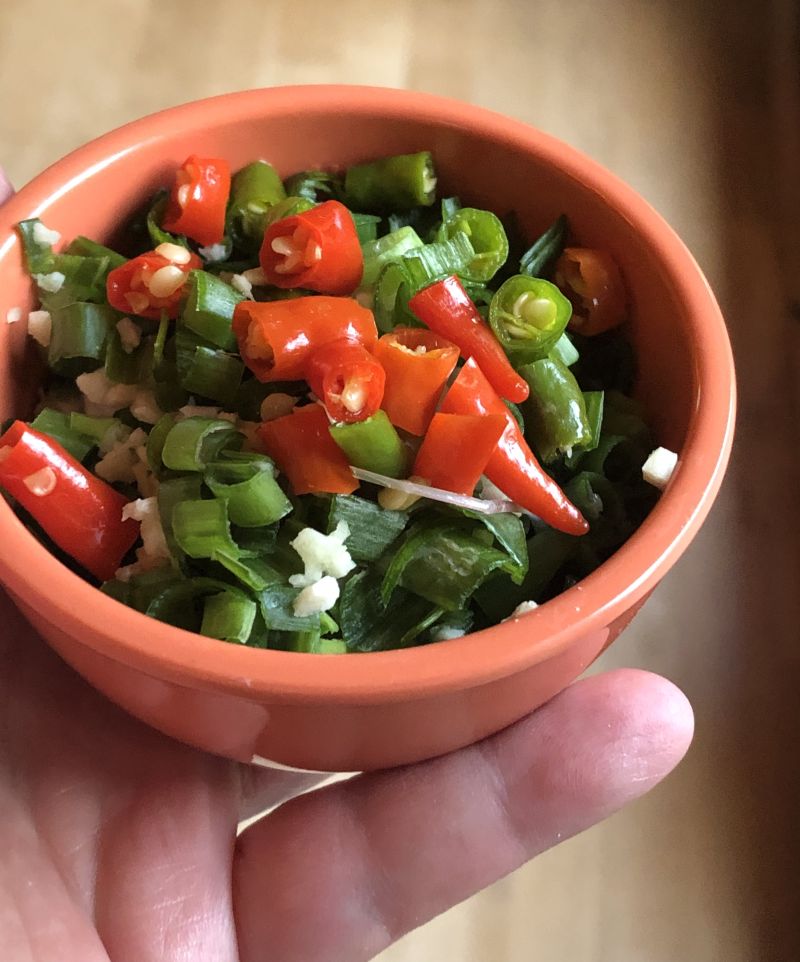
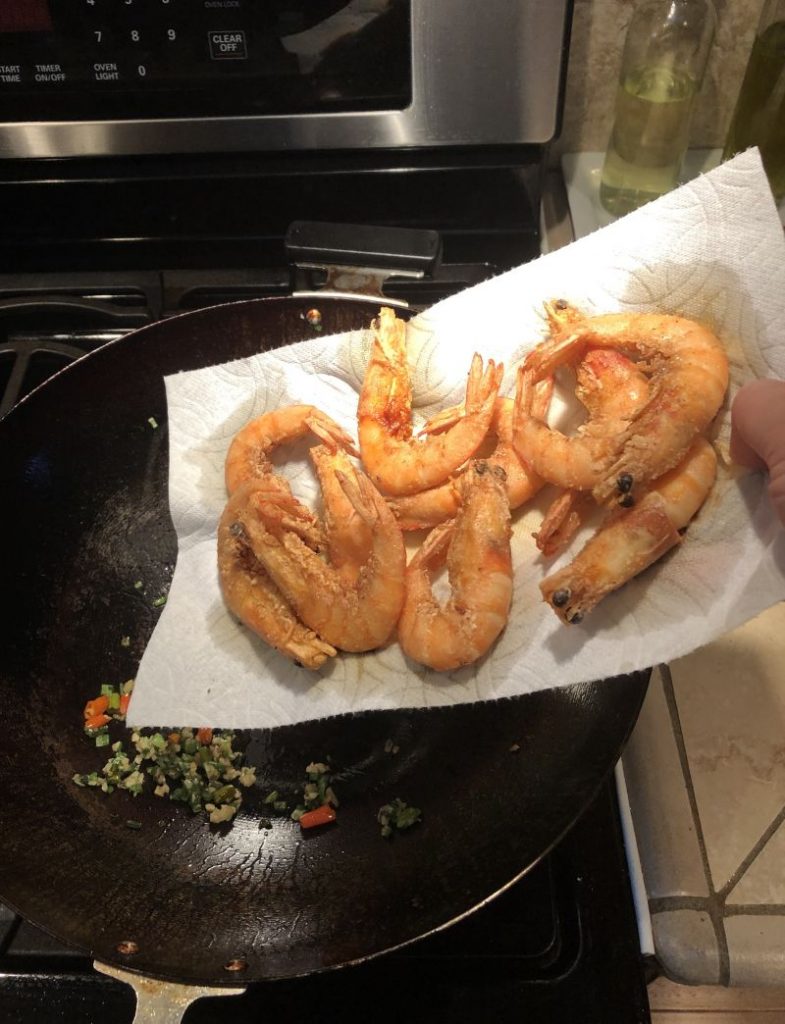
To reduce the natural moisture of the ginger, garlic, chile, and green onion, I stir-fried them on medium or medium-high heat until they were slightly sweet smelling and dryish. After that point was reached, I added the shrimp to finish the dish.
These salt and pepper shrimp are delicate and divine. Yes, you can air-fry the shrimp or even wok-sear the shrimp, but once in a while, go old school and find yourself some head-on, shell-on shrimp and pour the oil into the pan. Fry on!
Related post
Shrimp Buying Guide and Prep Tips (if you need a shopping assist!)
Spicy Salt and Pepper Shrimp
Ingredients
- 8 ounces shell-on head-on white shrimp (about 12 total)
- Rounded ¼ teaspoon white pepper
- Rounded ¼ teaspoon sugar
- Rounded ¼ teaspoon fine sea salt plus more as needed
- 3 tablespoons cornstarch
- 1 to 1 ½ tablespoons finely chopped ginger
- 1 clove garlic finely chopped
- 3 or 4 Thai chiles chopped
- 1 medium green onion green and white parts, chopped
- Neutral oil for deep-frying and stir-frying
Instructions
- Trim the shrimp of their feet, pointy tip and razor shape rostrum on top of their heads. Aim to get rid of parts that may poke or scrape you while eating. Put the shrimp in a bowl and toss to coat with the pepper, sugar, salt, and cornstarch.
- Heat about 1 inch of oil in a wok or deep skillet to about 350F, a wooden chopstick inserted will sizzle nicely. Have a dish with paper towel nearby for draining the shrimp.
- When the oil is nearly ready, drizzle 1 to 2 tablespoons oil on the shrimp, stir to coat and moisten (you don’t have to be super careful with distributing the oil). In 2 or 3 batches, fry the shrimp until crisp and orange-pink. Drain on the paper towel-lined dish.
- When done with frying, let the oil cool for about 5 minutes, then pour into a heat-proof bowl or measuring cup to cool completely before straining and reusing, or before pouring into a container and discarding.
- Clean the wok and return it to medium-high heat. When hot, swirl in 1 tablespoon oil. Lower the heat to medium and add the ginger, garlic, chiles and green onion. Cook, stirring constantly for a good 1 minute, to aromatize and dry a bit.
- Increase the heat to medium-high, then add the fried shrimp, stir to coat with the seasonings and heat through, about 1 minute. Transfer to a plate with all the bits of seasoning. Sprinkle on a tiny bit more salt for a savory edge, if you like. Serve immediately.













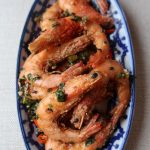




Anh says
Hi Andrea! ‘Fry on’ is my motto too when it comes to certain dishes where you will need the oil to make it authentic and delicious - we don’t eat a lot of fried foods but we do indulge once in a while -
This is a great recipe - I will try it once I get my hands on some big shrimps - thank you Andrea.
Andrea Nguyen says
Life is wayyyy too short. =D
Kevin says
Andrea,
I just made this for a multi-course meal. It was FANTASTIC!!!
Would you coin this dish as Vietnamese or Chinese? I've seen it in both restaurants as well as a couple of Thai eateries as well.
I watched the Chinese chef "glug" a small amount of wine into the wok prior to covering it, just before serving. Then a big handful of cilantro was thrown in just before plating...
Delicious!
Andrea Nguyen says
Hooray and love your tweaks!!! Thank you.